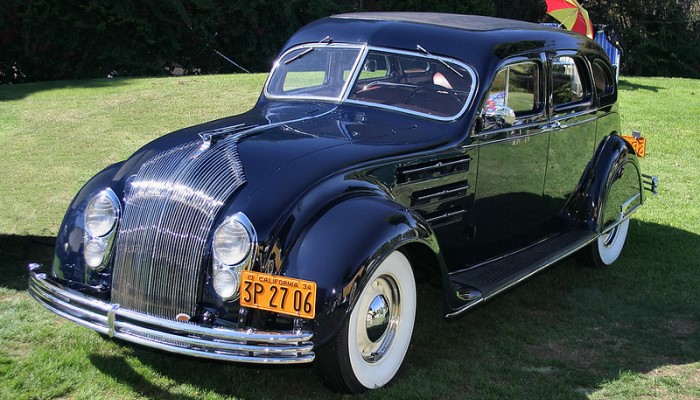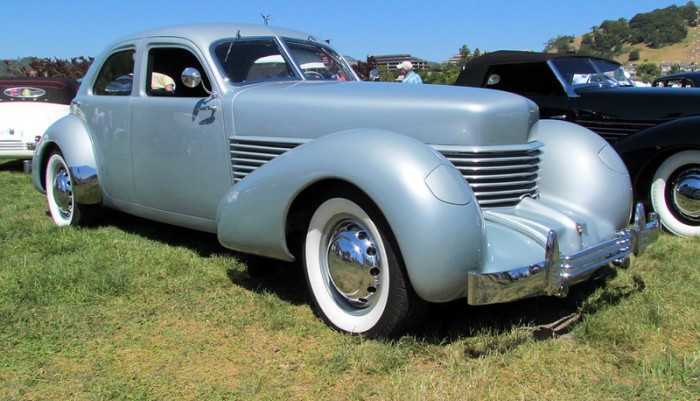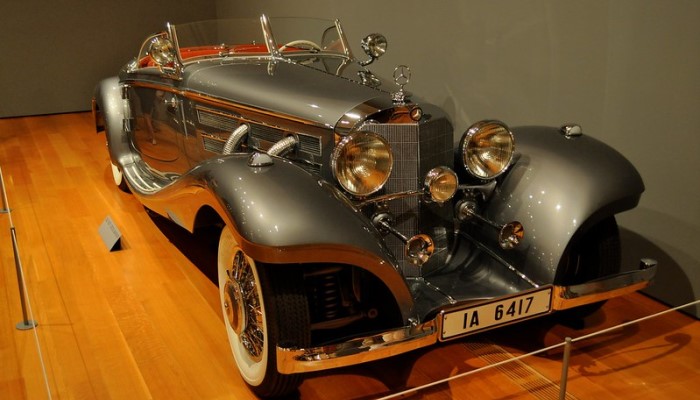Bugatti Type 57 SC Atlantic
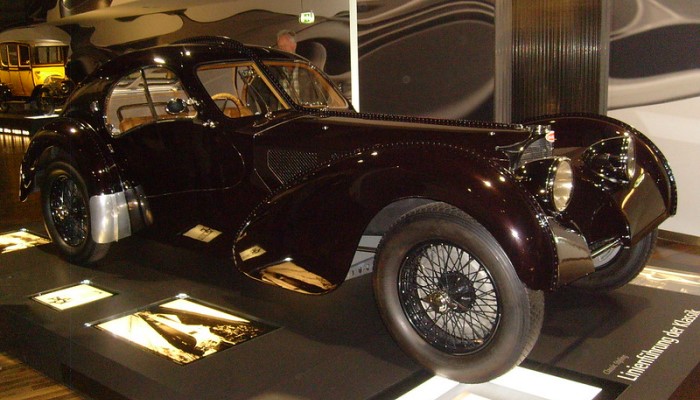
Photo: "Bugatti Type 57SC Atlantic" by BKM_BR
Eye-Wateringly Expensive
Bugatti Type 57SC Atlantic is considered to be one of the most expensive, unusual and mysterious cars. Very low and light, with 210 hp engine and a teardrop body, it easily accelerated to 124 mph (200 kph) and was perhaps the first supercar in existence.
Jean Bugatti, the famous son of Ettore Bugatti, was personally involved in the development of the Atlantic model and only four examples were ever built.
The impetus for the development of such an unusual project was the creation of a very light alloy of magnesium and aluminum by the German company IG Farben.
With its low weight, this alloy, called "electron", was very flammable, and the connection of parts by welding was unacceptable.
This meant that riveting was the only way to join body panels, and Jean brought the normally hidden riveted seams out in his design, creating an expressive combination of form and function.
The first prototype created from this project from "electron", debuted as new sports model Bugatti Type 57 at the 1935 Paris Motor Show under the name "Aerolithe" ("Meteor").
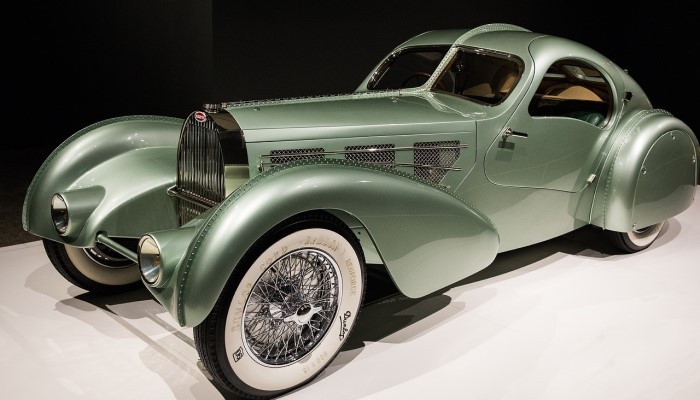
Photo: "1935 bugatti type 57s aerolithe" by MarkThomas (Pixabay)
The car enjoyed great interest, but the unusual shape and performance turned into only three orders. By the time production began in 1936, aluminum was preferred over the flammable "electron", but the method of assembling the body with rivets remained the same.
The design of the Atlantic repeated the Bugatti Type 57. On powerful, low and short sports chassis was 199 cu in (3,257 cc) compressor engine with a capacity of 210 hp.
Suspension - traditional: front axle beam on semi-elliptical springs, rear axle on reverse quarter-elliptical. De Rams shocks, fifteen-inch shoe brakes and spoked wheels with Rudge Witworth mount (a center nut) were used.
History of each of the Bugatti Atlantic is of great interest to fans of the brand with its ambiguity and mystery.
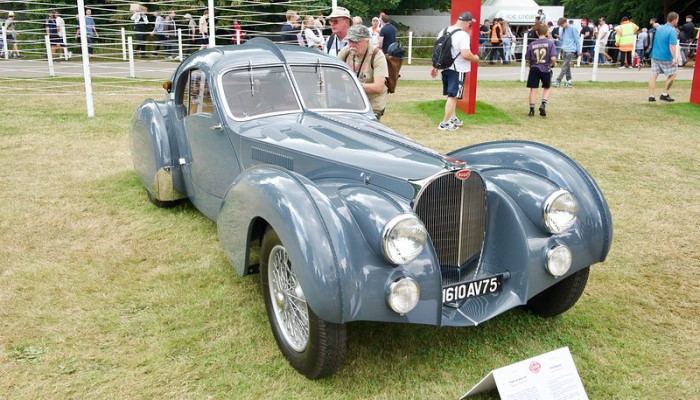
Photo: "Bugatti Type 57SC Atlantic" by Francisco Antunes.
All Bugatti Atlantic had aluminum bodies on a wooden frame, and external riveted seams only emphasized the originality of the model, there was no technological need for them.
At the end of the exhibition, the Bugatti Aerolithe participated in car races in France and its further fate is not known for certain.
There are opinions that one of the Atlantics was created based on the Aerolithe, but this is unlikely, as there are too many structural differences in the frame, suspension and bodywork of these models to consider using any Bugatti Aerolithe components in the manufacture of Atlantic cars.
57SC Atlantic Owners
Bugatti Type 57SC Atlantic, chassis #57374, was the first of the Atlantics ordered by Lord Victor Rothschild. As ordered, the car was light blue with a dark blue interior.
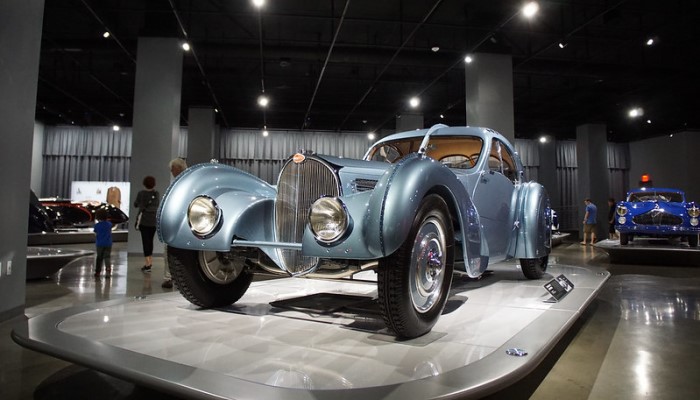
Photo: "Petersen Museum - Rolling Sculpture Exhibit 2016" by oldsport500
In 1939 the car was sent back to the Molsheim factory to have a compressor installed.
The second owner of the car was Bob Oliver from Los Angeles, who made enough changes to the appearance of the car - increased the size of the rear windows and regularly repainted the car, for some time it was even red.
In 1971, Peter D. Williamson purchased Atlantic #57374 at auction for a whopping $59,000 and spent several years restoring the car to 1936 specification.
Bugatti Type 57SC Atlantic, chassis #57473. The car was sold to an elderly French couple who returned it to the factory in 1937.
The car remained at the factory until 1939, and perhaps it was during this period that changes were made to the appearance, the main of which touched the rear fenders, they were lengthened and shaped in the Aravis style.
Headlights, in accordance with the new fashion, were placed in fairings on the wings.
The Atlantic changed hands after that, and in 1955 was hit by a train at a railroad crossing, killing the car's owner, Rene Chatard, and his driving companion.
The mangled car was in the yard of the police station for 10 years, until it was discovered in 1965 and bought by Paul André Benson, who spent more than ten years restoring the deceased Atlantic.
The restoration was finally completed under the new owner of the car, Nicolas Seydoux.
The last Atlantic with chassis #57491 was purchased by Mr. R. B. Pope of London in 1939. The original color of the car is "Dark Sapphire Blue". The car was registered and given the UK number plate EXK6.
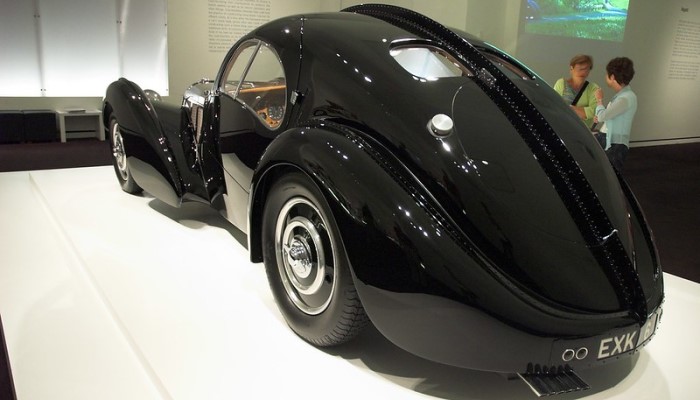
Photo: "57SC Atlantic: Rear 3/4 view" by jcheng
In the sixties, the car was owned by the famous writer Barry Price, and since 1988 - New York fashion designer Ralph Lauren, who made the Bugatti Type 57SC Atlantic the star of his collection.
The car, which has been preserved in very good condition, was nevertheless extensively examined and restored to its original condition over the course of two years by a team of restorers led by Paul Russell.
The work was completed in 1990. The only difference from the original is the black color of the car, as, indeed, all Bugatti in the Ralph Lauren collection.
Eye-Wateringly Expensive
The Bugatti Type 57SC Atlantic is one of the most sought-after classic cars in the world, and it comes with a price tag that will make your eyes water.
The last time one of these incredibly rare machines were sold at auction, it fetched an extraordinary price of $43 million, an astonishing sum that left car enthusiasts everywhere blinking in disbelief.
With such a stratospheric price, owning one of these legendary cars is a dream that only very select few can ever hope to realize.
"Lost in the War" Story
It's a story that car buffs and history enthusiasts alike will find fascinating. The Bugatti Type 57SC Atlantic, one of the most iconic cars of its time, disappeared during World War II and has remained missing ever since.
In the chaos of the conflict, the car disappeared without a trace. Some speculate that it was seized by the Nazis and hidden away in a secret location, while others believe that it was destroyed in a bombing raid.
Despite countless searches over the years, no one has ever found the missing car. It remains one of the great mysteries of automotive history, a symbol of a bygone era when cars were not just vehicles, but works of art.
Final Word
Despite the eye-watering cost, the Bugatti Type 57SC Atlantic remains one of the most beautiful and iconic cars in automotive history, with its sleek, aerodynamic lines and unparalleled engineering making it an object of desire for auto enthusiasts the world over.
If you ever get the chance to see one up close, don't hesitate - it's a sight you'll never forget!

Unique Car Zone Team
A group of several fans of everything that moves on four wheels, a few article creators, a couple of marketing strategists, designers, web developers, and lots of coffee.




